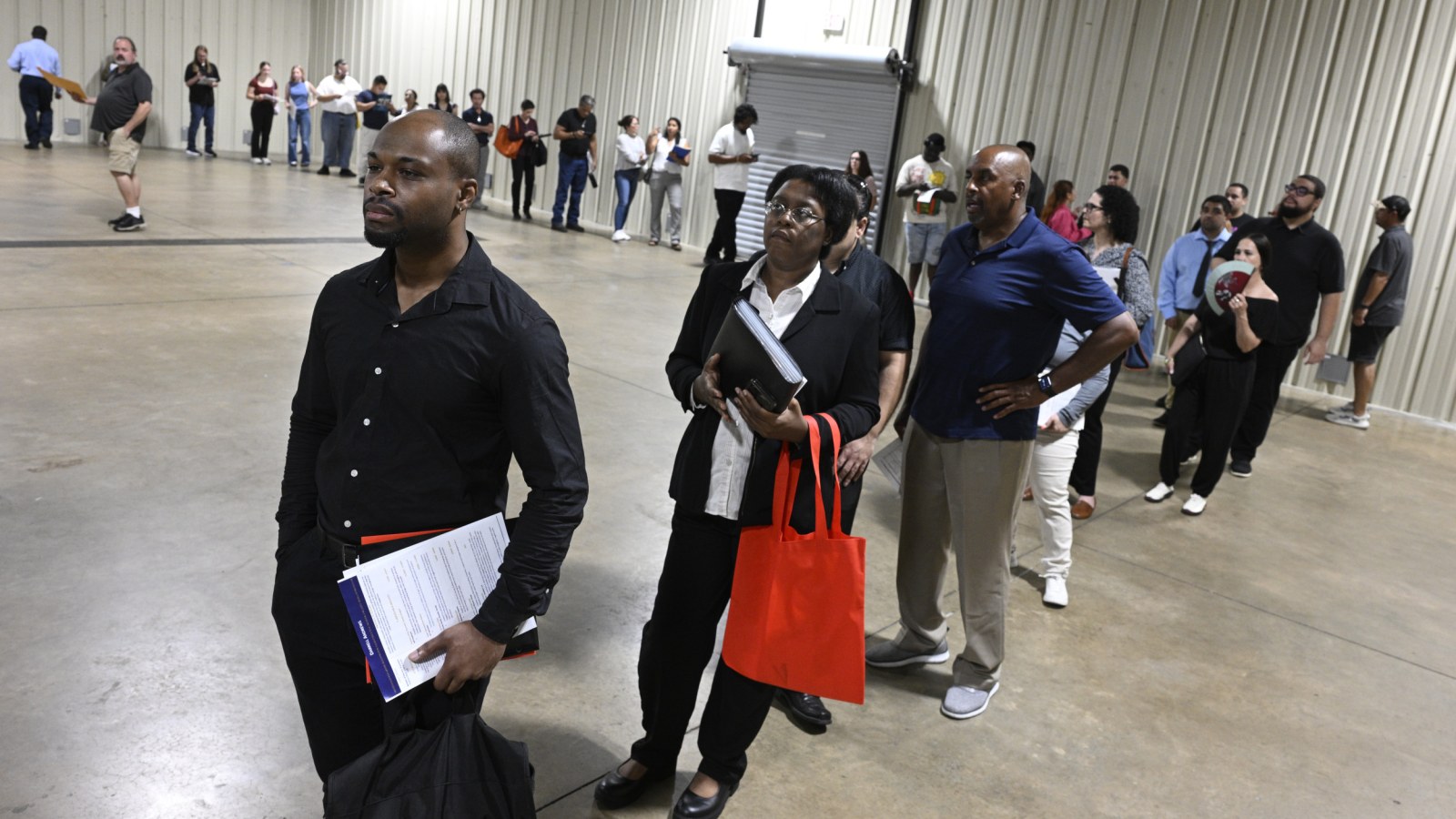By Hugh Cameron
Copyright newsweek

Amid a broad slackening of the U.S. labor market, and in spite of campaign promises to save “Black jobs,” the unemployment rate for Black workers is surging under President Donald Trump.According to seasonally adjusted data published Friday by the Bureau of Labor Statistics (BLS), the unemployment rate for Black Americans rose from 7.2 percent in July to 7.5 percent in August, now at its highest level since October 2021. This compares to 4.3 percent for the wider labor force and is more than double the rate for white Americans (3.7 percent).While this disparity is a perennial feature of the U.S. labor market, the changes since the start of the year are particularly notable. White unemployment has risen by 0.3 percent since January but during that time Black unemployment has climbed 1.3 percent, with the bulk of this occurring over the past three months.Why is Black Unemployment Surging?”I think part of the surge over the last few months is that Black workers were overrepresented in the federal workforce,” said Gary Hoover, a professor at Tulane University’s Department of Economics.A January report from Pew Research Center in January—published as workers braced for the sweeping federal cuts that had been pledged by Trump—found that Black Americans made up 18.6 percent of the federal workforce, despite comprising 12.8 percent of the population.”Thus, huge indiscriminate cuts in the federal work force have meant an overrepresentation in employment cuts for these workers,” Hoover added.According to the latest layoffs report from outplacement firm Challenger, Gray & Christmas, actions by the Department of Government Efficiency (DOGE) have been the most frequently cited reason for job-cut announcements this year, accounting for 292,279 planned layoffs so far in 2025. The Partnership for Public Service, a nonpartisan D.C.-based organization, revealed in late August that just under 200,000 federal workers had already left their jobs as a result of the administration’s “sweeping reductions to the civil service.”The Trump administration says it is trying to strengthen education‑to‑job pipelines that matter for Black workers. In April it signed an executive order creating a new White House initiative and advisory board for HBCUs to deepen employer partnerships, improve access to federal research funds and support student success.The One Big Beautiful Bill Act, signed July 4, 2025, allows workers to deduct up to $25,000 in tip income. The White House frames such moves as relief aimed at service and hourly workers, where Black workers are also heavily represented.A Canary in the Coal Mine?However, as well as the outsized impact of DOGE cuts, the rise in Black unemployment may also reflect more general and demographic-wide difficulties for U.S. workers.”The rise in Black unemployment may show a slackening of the labor market, since there was an increase overall in unemployment rates for everyone during the past 4 months,” labor economist Marlene Kim told Newsweek, adding that during periods of uncertainty, Black workers are typically “less likely to be hired and often the first let go.”As evidence of this “slackening,” Kim pointed to Friday’s report from the BLS in which the agency revealed that the U.S. economy added a paltry 22,000 jobs in August. This was far short of the expected 75,000 and below the 73,000 contained in July’s initial tally—which alongside major revisions to previous data led President Trump to fire the country’s top employment statistician.And the labor market is showing other unmistakable signals of stress. The number of unemployed workers is now greater than the total number of job openings for the first time since April 2021. Moody’s Chief Economist Mark Zandi described this to Newsweek as “a strong tell that the job market is struggling.”Meanwhile, college grads—typically seen as less likely to encounter employment-related hurdles—are finding it increasingly challenging to gain a foothold in the U.S. jobs market.Experts have told Newsweek that the difficulties for both jobseekers—white and especially Black—should be viewed against the backdrop of a wider deterioration on the overall economic outlook, now on the precipice of a major downturn according to certain economists.As Heather Long, chief economist Navy Federal Credit Union, noted following Friday’s report, “in downturns, it’s typically young people and Black Americans who suffer first with layoffs.”Professor Hoover of Tulane University concurred, pointing Newsweek to a paper in which he and his colleagues found that “adverse macroeconomic shocks have differential effects on labor market outcomes for Blacks and whites, hurting Blacks disproportionately more than whites.”Not only are they likely to feel pronounced effects, Hoover said that any weaknesses in the respective labor conditions of Black Americans “typically migrate through the entire economy and should be used as a signal of an economic downturn which will follow.””Black and young workers are tenuously attached to the economy and when we see faults appearing there, we can reasonably expect there to be broader downturns,” he added.Historically, Black unemployment rates reached 16.8 percent in 2010 following the Great Recession but recovered to 5.3 percent in 2019. They reached 16.8 percent again during the COVID pandemic in 2020 before falling to a record low of 4.8 percent in April 2023.With Tuesday’s revisions to nonfarm payrolls data painting an even bleaker picture of the labor market than previously thought, and with Trump officials promising to press ahead with more cuts to the federal workforce, the outlook for Black workers remains unfavorable and a recession—should one occur—especially troubling.



